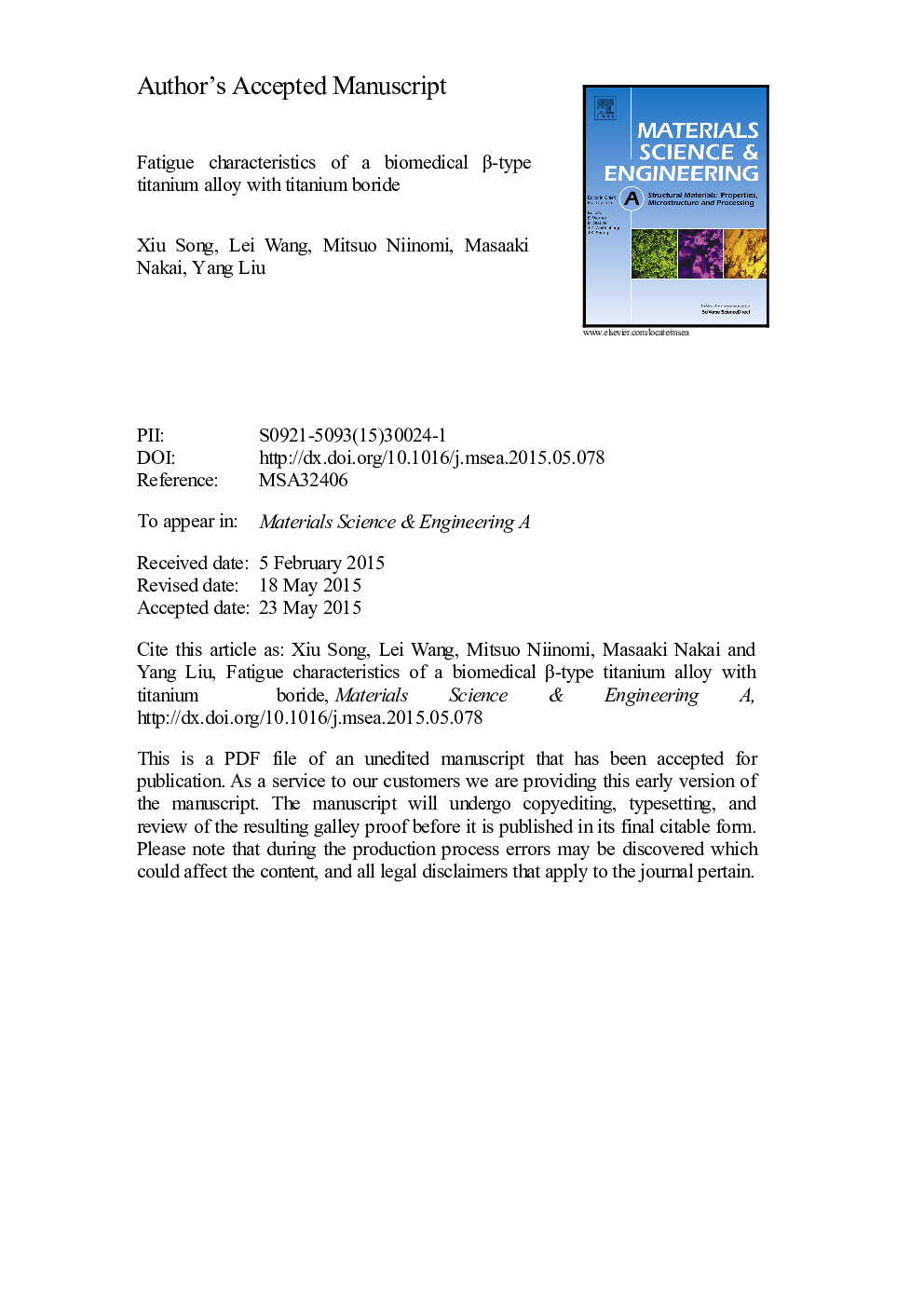| Article ID | Journal | Published Year | Pages | File Type |
|---|---|---|---|---|
| 1574014 | Materials Science and Engineering: A | 2015 | 28 Pages |
Abstract
A β-type Ti-29Nb-13Ta-4.6Zr (TNTZ) alloy containing various amounts of TiB reinforcements has been developed to achieve higher fatigue strength for biomedical applications. Fatigue tests were performed at room temperature, and the effects of TiB on fatigue crack initiation and propagation were investigated. The results indicate that the fatigue limit of the TNTZ alloy was substantially improved by the TiB reinforcements. However, the fatigue strength first increased and subsequently decreased as the B concentration increased. TNTZ alloy with 0.10% B has the largest fatigue limit, which is 67% greater than that of the TNTZ alloy. The effects of TiB on the improvement of the fatigue properties are due to the following two factors. First, sliding of the dislocations can be blocked by TiB particles, which results in resistance to fatigue crack initiation. In addition, the crack deflection and crack bridging by the TiB particles could delay the crack propagation. Conversely, debonding of some larger TiB particles may occur, especially when the B concentration is higher than 0.20%. Therefore, the crack initiates from the debonding of the TiB particles and easily propagates along the voids from the interfacial decohesion, which could exert a deleterious influence on the fatigue strength.
Related Topics
Physical Sciences and Engineering
Materials Science
Materials Science (General)
Authors
Xiu Song, Lei Wang, Mitsuo Niinomi, Masaaki Nakai, Yang Liu,
